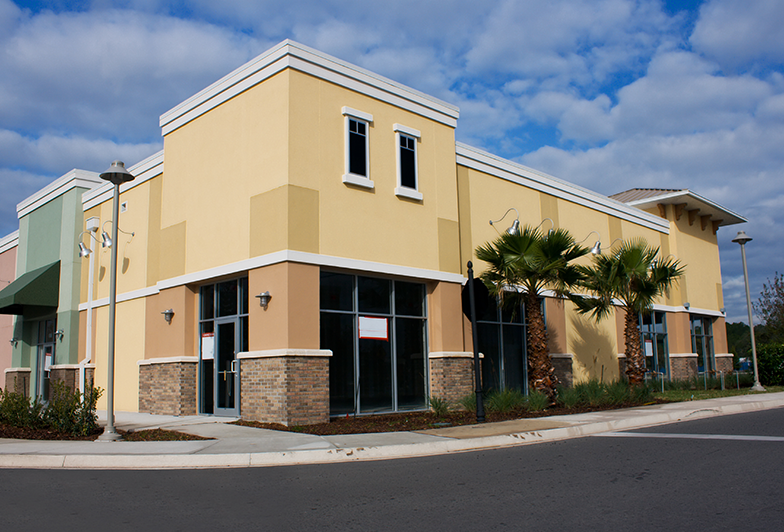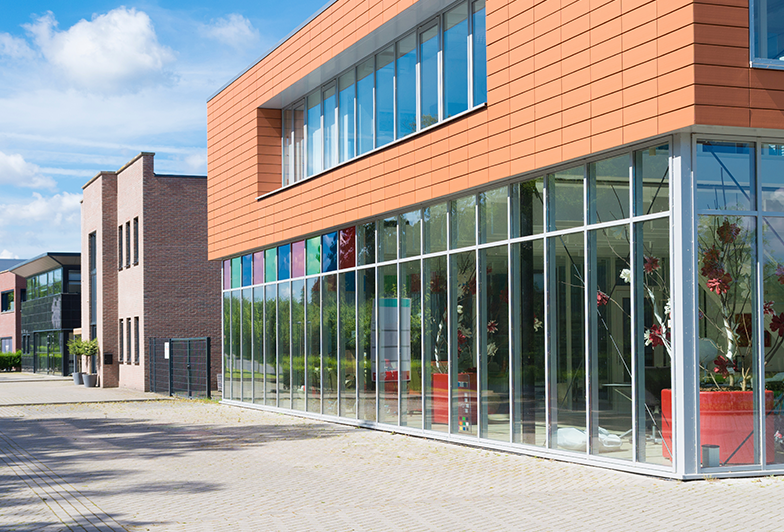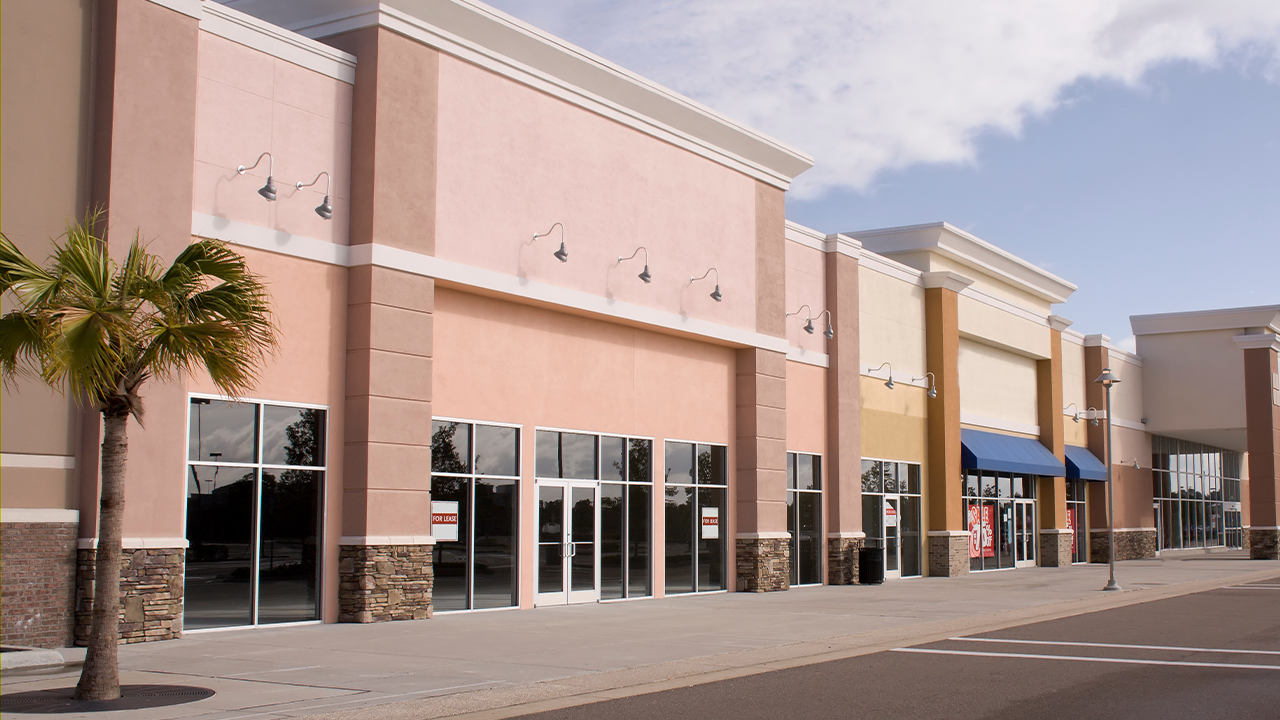Don’t Completely Write Off Commercial Real Estate Investments Just Yet
Commercial real estate often gets the undeserved bad rap of being limited to gloomy office landscapes. While that may have been true in the past, innovative designers are thinking outside the box and designing healthy, vibrant industrial and commercial spaces that tackle the challenges currently facing U.S. office spaces.
Join us as we delve into successful new nationwide developments and show that this is an excellent time to venture into commercial real estate investing. We'll highlight Connect Invest's impressive short note portfolio and spotlight diverse commercial investments beyond conventional office spaces.
We'll help reshape your perspective on commercial real estate, explore promising avenues for financial growth, and explain how to invest in commercial real estate.
Introduction to Commercial Real Estate
Before we dive into how to invest in commercial real estate, let's consider how it differs from residential real estate.
Commercial real estate is real estate that is used for business or other income-generating ventures. Office space, industrial, multifamily rentals, and retail are the four main classes of commercial real estate, and these four classes can be broken down further. For example, office space is defined by these three categories:
- Class A - buildings with the best locations, aesthetics, age, and infrastructure.
- Class B - older buildings that can't compete with Class A structures and are often scheduled for renovations.
- Class C - oldest buildings, 20 or more years old, located in least desirable areas and needing maintenance.
Commercial real estate can range from a mom-and-pop storefront to a giant, modern shopping complex. While some businesses operate from buildings they own, most lease commercial space. Commercial real estate investing opportunities allow investors to own these spaces and collect rent from their business tenants. Commercial leases, which typically range from five to 10 years in length, are attractive to investors due to their longevity and stable cash flow.
The fundamental difference between residential and commercial real estate is that the primary function of residential real estate is private living quarters. In contrast, commercial real estate is used for business activities. The rate for commercial leases is expressed in terms of an amount per square foot, and residential real estate rent is defined by a monthly amount. 
How to Invest in Commercial Real Estate
Historically, real estate investing has been a low-risk investment with less volatility than the stock market. Real estate's value appreciates and provides cash flow through rental income.
Now that we've defined commercial real estate and understand the fundamental differences between it and the residential variety, it's time to talk about how to get into commercial real estate. Let's look at the two ways to become an investor.
- Direct Investment - Direct investment occurs when investors are landlords and physically own property. This type of investing demands highly knowledgeable and experienced real estate investors or those who can hire firms who are.
Direct investment is high-risk and high reward, and because of the need for a large amount of capital, it is usually reserved for high-net-worth individuals.
- Indirect Investment - Indirect investors don't physically own property. Instead, they invest in securities like real estate investment trusts (REITs) or exchange-traded funds (ETFs) that pool investor money to buy shares in property and developments. Indirect investment can also include investing in real estate adjacent companies like banks and realtors.
Another easy way to indirectly invest in real estate is through short notes. Connect Invest's short note offerings feature a portfolio of over 50 active commercial and residential real estate projects across the USA, spanning acquisition, development, and construction phases. Borrowers who need to raise capital will issue short notes that investors can purchase.
Connect Invest Short Notes are collateralized and backed by first-position loans. Borrowers are carefully vetted and recommended by other borrowers who have established long-term relationships with Connect Invest. Investment funds are spread across a diverse set of projects, protecting your principal. Short note investing is one of the most accessible paths to commercial real estate investment.
Is commercial real estate a good investment? The answer is a definitive yes. However, as with any investment opportunity, there are pros and cons that you should be aware of.
Pros:
- It's a hedge against the stock market, which can have significant volatility. Real estate offers portfolio stability and diversity.
- Attractive leasing rates offer a high-yielding source of income.
- Long leases translate to stable cash flows from the tenants.
- Real estate appreciates.
Cons:
- Direct investment requires substantial capital that average investors usually don't have.
- There are many rules and regulations to navigate in direct investing.
- Direct investment in Class B or C commercial real estate can incur significant renovation costs.
- Commercial real estate is an illiquid asset.

The State of Commercial Real Estate by Sector in 2024
The poor state of office space and its availability in the U.S. is a frequent topic in the media. It's easy to get the erroneous impression that commercial real estate is limited to that space. Let's debunk the myth and get a clearer picture of the future for each commercial real estate sector.
Office
According to global commercial real estate services firm Cushman and Wakefield, the demand for office space has been negative for eight straight quarters. Economic uncertainty remains in the wake of the pandemic, and remote or hybrid work scenarios are still favored by employees. The normalization of remote and hybrid work has resulted in a continual decline in the need for office space and has made prospective tenants cautious about leasing.
On the surface, the national vacancy jumped to an all-time high of 19.7% in 2023, an increase of 200 basis points. But that doesn't tell the entire story, and digging a little is essential. When looking at year-end 2022, the decline in vacancy was primarily in smaller markets, and it actually increased by a little less than half the national average in other markets. Other good news is that high-quality spaces are outperforming other markets and seeing growing rents.
New construction is down 5.3% from the previous quarter and sits at less than half of the peak it hit in 2020. Outlooks indicate that new construction will continue to decline.
Industrial
The industrial vacancy rate for commercial real estate is moving in a positive direction, surpassing 5% - a first since the third quarter of 2020. This is due to speculative constructive completions that occurred at a steady rate. The fourth quarter saw 156.3 million square feet of new building space completed, the second highest on record.
Retail
Is commercial real estate in trouble? The commercial real estate industry may be struggling in some areas, but retail isn't one of them. The pandemic penetrated every area of our lives and changed how things work, which is true of retail commercial real estate. Retail looks and works differently now because of high interest rates and increasing construction costs. Instead of new development, the retail model seeks existing centers that have made their spaces more attractive.
The vacancy rate is at a 15-year low, making it difficult for retailers to find suitable spaces. Cushman and Wakefield note that the rate at U.S. shopping centers is at its lowest since they began tracking it in 2007. Average rents in the fourth quarter are 4.1% higher than a year ago, and there's been a 17% cumulative rise since 2019 and a 41% increase over a decade.
Despite the challenges, retailers are enjoying the fruits of a growing economy and strong labor market and, as a result, are keeping the heat turned up on the demand for space.
Multifamily
According to CBRE (Coldwell Banker Richard Ellis), in 2023, there was a surge in the construction of multifamily units, so much so that the fourth quarter saw a record high of 140,800 units, bringing the total over four quarters to 416,500. Renter demand responded to this record new construction. Since then, there have been fewer starts, which will slow down construction into 2025 and beyond.
Anticipated federal rate cuts will likely mean an increase in investment activity in the second quarter of 2024, and distress-focused investors will want to pay attention because loan maturities will increase.
Parting Thoughts
If your focus is only on office space, it's reasonable to wonder, "Is commercial real estate a good investment?" While the office space reputation could be better, it's vital to understand that the multifamily, retail, and industrial sectors are doing well and even hitting record highs in some areas.
Commercial real estate investing is a solid, low-risk way to diversify your portfolio. It's recommended that a significant chunk of investments should be in real estate. With Connect Invest, it's easy to be an indirect investor in commercial real estate. Some of our projects include:
- Reno, NV: The collateral for this loan is part of the approximately 600,000-square-foot Summit Shopping Center in Reno, NV. The specific collateral for this loan is a 20,342-square-foot parcel with a 2,332-square-foot building constructed. The single-tenant building is 100% pre-leased to a national Mexican quick-serve restaurant that anticipates opening in July.
- Hobbs, NM: The collateral for this loan consists of an 80,000+ square foot commercial retail property that was the site of a former K-Mart. The borrower has leased 87% of the property to national brands, which will open for business once tenant improvement work is completed.
- Rockford, IL: The borrower purchased a primarily vacant 121,800-square-foot shopping center. Since acquiring the site, the borrower has reduced the vacancy to 21% and is working with an agent to find renters. The proceeds will be used towards the asset's repositioning, including tenant improvement work and a facelift for the center's exterior.
- Las Vegas, NV: The borrower plans to preserve the historical aesthetic of a 32,000-square-foot building constructed in the 1950s. The space will feature a museum, a pizzeria, and a cafe. The proceeds will be used to acquire the property and continue the pre-construction work on the property.
Commercial real estate investing will put you in a position to build wealth and provide a buffer for your portfolio through diversification. Signing up is easy and takes just a few minutes. There are no fees, the minimum investment is as low as $500, and terms range from 6 to 24 months. You have control over your investments and earn passive income that offers higher-than-average yields.
Do you have questions? Contact us - our experienced team is happy to help you.

